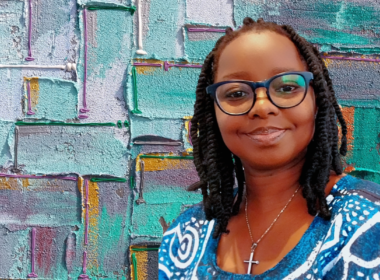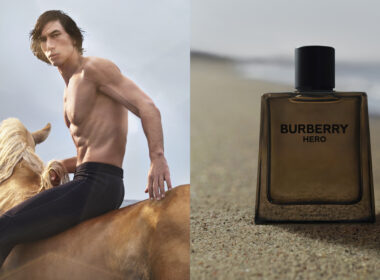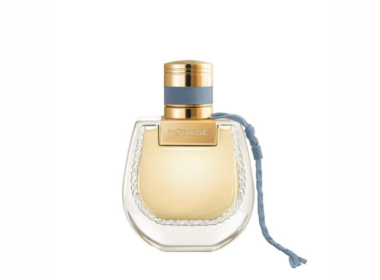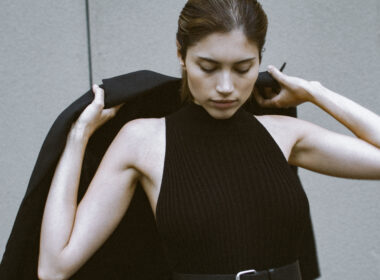Exploring the subject of visual art is like plunging into a vast ocean of narratives conveyed via shapes, colours, and textures. To navigate this ocean, FAB L’Style Team sat down with Damola Adepoju, a revered Lagos-based artist and the current Welfare Officer for the Society of Nigerian Artists. Known for his innovative newspaper collage technique and striking gold brushwork, Damola’s works are a profound reflection of Lagos street scenes, gender politics, and the resilience of the human spirit. His artistic journey, shaped by over 100 group exhibitions and two solo shows, has earned him international acclaim, including recognition from the U.S. Congress and Senate.
In this exclusive Damola Adepoju artist interview, we explore not only his creative process but also the power of collaboration in art—a vital force driving contemporary visual narratives. Whether you’re an art enthusiast or someone curious about the evolving African art landscape, this conversation promises to unravel the layers of a master at work, whose art speaks louder than words.

Curating Solo Exhibitions vs. Group Shows: A Personal Insight
FAB: It says that you have participated in over 100 group shows. What can you say about the essence of collaboration in the visual arts in comparison to collaborations in other forms of art?
Damola Adepoju: Collaboration in visual arts is a dynamic and enriching experience that fosters creativity, innovation, and growth. Having participated in over 100 group shows, I can attest that the essence of collaboration in the visual arts lies in its ability to bring together diverse perspectives, techniques, and energies. This convergence of artistic voices creates something truly unique and powerful.
Unlike collaborations in other forms of art, such as music or literature, visual collaborations can be more spontaneous and intuitive. When artists come together, they bring their individual styles, experiences, and creative processes, leading to exciting and unexpected outcomes. It’s akin to a visual conversation, where each artist adds their distinct voice to the dialogue, enriching the overall narrative.
For instance, during a group exhibition, I witnessed a painter’s bold brushstrokes complemented by a sculptor’s intricate textures, while a photographer’s captivating imagery added another layer of depth to the installation. This synergy of creative expressions resulted in a visually stunning and thought-provoking experience that resonated with viewers.
In the visual arts, collaboration allows artists to push boundaries, challenge themselves, and explore new ideas. It’s an opportunity to learn from others, exchange techniques, and gain fresh insights. By embracing collaboration, artists can create something truly remarkable, one that transcends individual capabilities and leaves a lasting impact on the art world.
FAB: What has the journey been like from the young Damola from his father’s room to notable showrooms and walls around the world?
Damola Adepoju: My journey from the young Damola, creating art in my father’s room, to showcasing my works in notable showrooms and walls around the world has been a winding road of self-discovery, filled with twists and turns that have shaped me into the artist I am today. This journey has been a testament to my unwavering commitment to my passion and vision.
I vividly remember my early days, spent drawing on the walls of my father’s house, much to his chagrin, and sketching comic characters in my school books, which often earned me rebukes from my teachers. However, these experiences only fuelled my creativity and drive. I spent hours observing the vibrant Lagos landscape during car rides to church with my dad, studying the intricate patterns on my mother’s Ankara fabrics, which formed the foundation of my colour sense and understanding of vibrant hues.
As I grew, so did my art. I began showcasing my works in my primary school art studio at Dairy Farm Primary School in Agege and continued to do so throughout my secondary school days. The feedback was overwhelming—people connected with my story, my passion, and my unique perspective. This encouragement solidified my resolve to remain committed to my art’s essence: telling stories that need to be told, amplifying marginalised voices, and celebrating the beauty of our differences.
Throughout this journey, I’ve had the privilege of exhibiting my works globally, pouring my soul onto the canvas with messages of hope. I’m humbled by the opportunity to leave my mark on the world. Looking back, I realise that my father’s house was just the beginning—the world became my canvas, and I’m grateful for the incredible journey that has brought me to where I am today.

Exploring Gender Politics through Lagos Street Scenes
FAB: What informed your style of painting, stylised female forms, gold brushwork, and your major themes?
Damola Adepoju: My style of painting is a vibrant fusion of my Nigerian heritage, culture, personal experiences, and the dynamic Lagos landscape where I grew up and spent most of my life. I’m drawn to stylised female forms, soft gold brushwork, and themes of hope and resilience because they speak to the strength and beauty of the human spirit.

As an advocate for female and gender equality and being a father to all daughters, I use my art to convey messages of hope and equality in stylised forms. A pivotal moment that influenced my style was when a female model I worked with was struggling with complicated relationship issues. Her posture and demeanour during that photoshoot inspired me to incorporate newspaper collage into my artwork, symbolising the imprint of her contemplation.
My major theme, ‘Lagos: Centre of Excellence,’ is a tribute to the city that has captured the essence of life with its unique landscape, culture, and contradictions. I’m fascinated by the clumsy buildings, crowded streets, zigzag wires, and the aquatic splendour of Eko. Lagos is a city that embodies the beauty of chaos, where hope and resilience thrive amidst challenges. Through my art, I aim to celebrate the city’s eccentricities and the people who call it home.

FAB: Lagos street scenes play a significant role in your work. How do you approach capturing the dynamic energy of the city in your pieces?
Damola Adepoju: Capturing the dynamic energy of Lagos in my pieces requires a profound connection to the city’s rhythms and pulse. I immerse myself in the streets of Lagos, frequently visiting the Eko Ile to study the architecture, the clumsiness of building structures, the drama of its dwellers, and its economic activities. Also, I observe the area’s view from the skyscrapers building and the Third Mainland Bridge, taking in the sight of Lagos surrounded by water. I soak in the sounds, textures, and energy of the city and then channel that essence into my art.
To convey the vibrant pulse of Lagos, I employ bold colours, or thrimonochrom, with the infusion of newspaper collage as my trademark. I experiment with textures and compositions that evoke the city’s energy. I often create plein air paintings, setting up my easel on the spot to capture the mood of the Lagos scene. This approach allows me to testify to the city’s dynamic spirit through my art. I recall a particular experience where I set up my easel on the bustling streets of Balogun Market. The sounds, smells, and energy of the traders and passersby inspired me to create a piece that captured the essence of Lagos’ commercial hub. The resulting artwork, ‘Eko Ile,’ is a testament to the city’s dynamic energy and my connection to its rhythms.

The Impact of Adepoju’s Role as Welfare Officer
FAB: Your role as the Welfare Officer for the Society of Nigerian Artists suggests a deep commitment to the arts community. How do you balance your administrative responsibilities with your creative work?
Damola Adepoju: Balancing administrative responsibilities with creative work requires a delicate dance between structure and freedom, discipline, and time management, all fuelled by passion. As the Welfare Officer for the Society of Nigerian Artists, I’m deeply committed to supporting fellow artists and promoting the arts community. This role not only complements my creative work but also fuels my sense of purpose and inspiration.
I recall a challenging yet rewarding experience in 2021 when I was commissioned to create paintings for the opening of Guarantee Trust Bank’s headquarters in Abeokuta, Ogun State. Coincidentally, this was also the period I was tasked with organising and coordinating the annual prestigious October Rain exhibition for the Society of Nigerian Artists, Lagos chapter. To meet the deadlines, I had to attend to administrative tasks during the day and dedicate my nights to painting for months. Despite the demanding schedule, I found joy in serving the arts community and fulfilling my creative vision.
For me, it’s seamless to balance administration and creativity when doing what I love. I see my role as a call to humanity and a contribution to the progress of my industry. By supporting fellow artists and promoting the arts, I’m able to inspire and be inspired, creating a symbiotic relationship that nourishes both my administrative and creative pursuits.
Damola Adepoju: Being listed among the ‘101 Nigerian Artists’ is an immense honour and a testament to my unwavering dedication and passion for the arts. This recognition serves as a powerful motivator, driving me to continue pushing boundaries, innovating, and inspiring others to do the same.
What makes this recognition even more significant is that the list comprises pioneers and leading figures in Nigerian art, many of whom I studied and admired during my art student days at Lagos State Polytechnic. To be mentioned alongside these icons is a dream come true, filling me with joy, fulfilment, and a renewed sense of purpose.
One memorable experience that stands out was meeting a collector who had the book. His excitement was palpable, and he was thrilled to meet one of the featured artists in person. This encounter led to the purchase of some of my paintings at a good price, which not only validated my work but also provided a sense of financial security.
Since being listed, I’ve received numerous calls from readers of the book, particularly those who visit Nike Gallery, where the book is showcased. These interactions have led to new opportunities, collaborations, and a broader audience for my art. Being part of the ‘101 Nigerian Artists’ has opened doors, sparked meaningful connections, and further fuelled my passion for creating art that inspires and makes a lasting impact.

Blending Art with Fashion: Damola Adepoju’s Unique Style
FAB: What defines your fashion style? Does your art influence your fashion style? Are you keen on fashion?
Damola Adepoju: My fashion style is an authentic reflection of my artistic personality—bold, eclectic, and playful. I delight in incorporating similar themes, textures, and colours from my art into my clothing choices, creating a harmonious fusion of creativity and self-expression.
A memorable experience that showcases my fashion style was at the 2024 Pan African Art Films Festival in California, Los Angeles. I wore a stunning Adire, a traditional Nigerian attire, paired with a matching Yoruba cap, which stole the show. People were drawn to my unique outfit, and I became a magnet for photo opportunities.
I’m deeply passionate about fashion, often incorporating elements of my art into my wardrobe. I’ve even printed some of my paintings onto t-shirts, which I pair with jeans for a distinctive look. My love for fashion has also influenced my family, particularly my daughters. During their school’s cultural day, they won the show thanks to the artistic touch in their dressing, which has now become a staple in their wardrobe choices.
For me, fashion is an extension of art, and I’m keen on exploring new ways to express myself through both mediums. I believe that fashion, like art, should be a reflection of one’s personality and creativity, and I strive to embody that in my daily life.
FAB: How do you approach the process of curating your own exhibitions compared to participating in group shows?
Damola Adepoju: Curating my own exhibitions offers me unparalleled control and creative freedom, allowing me to fully immerse myself in every aspect of the show, from concept to execution. I can tailor the theme, tone, and narrative to my vision, ensuring a cohesive and impactful experience for viewers. A memorable experience was my first solo exhibition, ‘Reflections on Lagos,’ alongside a seasoned curator. This opportunity allowed me to refine my skills and showcase my art in a meticulously crafted environment.
On the other hand, participating in group shows provides valuable opportunities for collaboration, learning from fellow artists, and exposing my work to new audiences. I cherish these experiences, as they broaden my perspective and push me to grow as an artist. Curating the Society of Nigerian Artists’ exhibitions, for instance, requires a dynamic approach, considering the diverse views, genres, and perceptions of numerous participants. While it’s a rewarding experience, it’s also tasking, demanding careful attention to detail and effective communication.
In contrast to solo exhibitions, group shows require adaptability and flexibility, as I must align my work with the show’s overall theme and vision. Nevertheless, both experiences are essential to my growth as an artist and curator, offering unique benefits that enrich my creative journey.

FAB: As an advocate for the arts, what advice would you give to emerging Nigerian artists looking to make their mark in the international art scene?
Damola Adepoju: As an advocate for the arts, I would advise emerging Nigerian artists looking to make their mark in the international art scene to:
- Stay true to their unique voice and vision, avoiding the pressure to conform to trends or external expectations.
- Continually develop their craft through dedication, hard work, and a willingness to learn and grow.
- Engage with the arts community, building relationships with fellow artists, curators, and collectors to foster opportunities for collaboration and growth.
- Embrace opportunities for growth, including exhibitions, residencies, and workshops, to expand their network and visibility.
- Keep honing their skills, particularly in drawing and draughtsmanship, as these foundations are essential for artistic expression.
- Not be driven solely by financial gain, but rather by a passion for their art and a desire to contribute meaningfully to the art world. Financial success will follow when their signature and name command respect in the industry.
My own journey is a testament to this advice. I began creating art in the late 90s, when few galleries existed in Lagos and only the most exceptional artists were showcased. Through dedication, merit, and a passion for my craft, I have reached where I am today. I acknowledge the grace of God, my own hard work, and the value of perseverance in achieving success.
As the proverb goes, ‘Do you see someone skilled in their work? He will stand before kings; he will not stand before obscure men’ (Proverb 22:29 NIV). By focusing on excellence and staying true to their artistic vision, emerging Nigerian artists can make a lasting impact on the international art scene.



FAB: What philosophical legacy would you like to leave behind?
Damola Adepoju: My philosophical legacy would be a testament to the transformative power of hope, resilience, and empowerment. I aspire to inspire others to find light in darkness, to embrace their uniqueness, and to harness their creative potential to make a positive impact on the world. I envision leaving a lasting impact on people’s emotions, contributing to the cultural narrative, challenging societal norms, and inspiring positive change.
Through my art, I aim to create a sense of timelessness, transcending fleeting trends and tastes. My pioneering use of black and white with newspaper collage as a unique style and technique will, I hope, inspire future generations to embrace their individuality and find innovative ways to express themselves.
I believe that art has the power to challenge our assumptions, spark meaningful conversations, and bring about positive transformation. My philosophical legacy would be one of encouraging others to tap into their creative potential, to find their voice, and to use it to make a difference.
As I reflect on my journey, I am reminded of the wise words of Nelson Mandela: ‘The greatest glory in living lies not in never falling, but in rising every time we fall.’ My legacy would be a testament to the human spirit’s capacity for resilience, hope, and creativity in the face of adversity.











